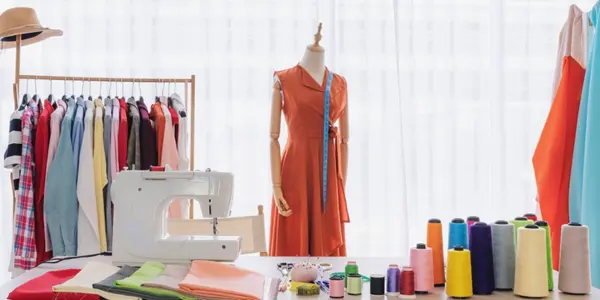Learn how to start a garment buying house effectively with our comprehensive guide. Essential tips and steps covered. Start today!

Welcome to our detailed guide on starting a garment buying house! Whether you’re an industry veteran or someone looking to enter the apparel business, establishing a garment buying house can be a rewarding venture. This guide will walk you through everything you need to know, from understanding the concept to setting up operations and ensuring sustainable growth.
1. Understanding the Garment Buying House Concept II How to Start a Garment Buying House
- Definition and Role: A garment buying house acts as an intermediary between apparel manufacturers and retail brands. It facilitates the sourcing of garments according to the specifications provided by the clients (retailers or brands). The buying house ensures that the manufacturing process meets quality standards, timelines, and pricing expectations set by the clients.
- Importance in the Supply Chain: Garment buying houses play a crucial role in streamlining the supply chain. They bridge the gap between manufacturers, who produce the garments, and retailers or brands, who sell them to consumers. Buying houses ensure that the right products are sourced from reliable manufacturers, meeting the requirements of the clients efficiently and effectively.
2. Market Research and Opportunity Analysis
- Identifying Market Needs: Conducting comprehensive market research is essential to identify the demand for specific types of garments, trends in consumer preferences, and the requirements of potential clients. Understanding these factors helps in tailoring your services to meet market needs effectively.
- Competitive Landscape: Analyzing existing garment buying houses provides insights into market trends, pricing strategies, service offerings, and client base. This analysis helps in identifying opportunities for differentiation and areas where you can excel to attract clients.
3. Legal and Regulatory Requirements
- Business Registration: Starting a garment buying house requires proper registration as a legal entity, which varies depending on your location and jurisdiction. This may involve registering as a sole proprietorship, partnership, LLC, or corporation, adhering to local laws and regulations.
- Compliance and Licensing: Compliance with local and international regulations is crucial. This includes obtaining necessary licenses and permits to operate as a buying house, adhering to labor laws, ensuring product safety standards, and understanding import-export regulations if dealing with international manufacturers.
4. Setting Up Infrastructure and Operations
- Location Selection: Choosing the right location for your garment buying house is critical. Consider proximity to manufacturers for ease of communication and logistics, accessibility for clients, and operational costs. A well-chosen location can enhance efficiency and reduce overheads.
- Office Setup: Designing an efficient workspace is essential for smooth operations. It should accommodate your team comfortably and provide facilities for meetings, sample inspections, and client presentations. Invest in communication tools and systems that facilitate seamless interaction with manufacturers and clients.
5. Building Relationships with Manufacturers
- Sourcing Manufacturers: Finding reliable manufacturers is crucial for the success of your garment buying house. Research and assess potential suppliers based on their production capabilities, quality standards, ethical practices, and reliability in meeting deadlines.
- Negotiation and Contracting: Establishing mutually beneficial agreements with manufacturers involves negotiating pricing, quality parameters, production lead times, and payment terms. Clear contracts help in managing expectations and minimizing disputes during the production process.
6. Developing a Strong Team
- Recruitment: Hiring skilled professionals with expertise in garment sourcing, quality control, logistics, and client relations is essential. Look for individuals with industry experience, negotiation skills, and a commitment to delivering high-quality service to clients.
- Training and Development: Continuous training and skill development are crucial for keeping your team updated with industry trends, technological advancements, and best practices. This ensures they can effectively navigate challenges and contribute to the growth of your buying house.
7. Quality Control and Assurance
- Quality Standards: Implementing rigorous quality control measures is imperative to uphold the reputation of your buying house. Define clear quality standards for garments based on client requirements and international benchmarks. Conduct regular inspections during production and before shipment to ensure adherence to these standards.
- Inspection Processes: Establish detailed inspection protocols to verify product specifications, fabric quality, stitching techniques, sizing accuracy, and finishing details. Address any issues promptly to maintain consistency and reliability in the quality of garments sourced for your clients.
Conclusion
Starting a garment buying house requires meticulous planning, industry knowledge, and strategic execution. By following the steps outlined in this guide, you can establish a successful buying house that meets the demands of both manufacturers and retailers in the apparel industry. Whether your goal is to optimize sourcing efficiency, enhance product quality, or expand your client base, the journey begins with a solid understanding of the buying house concept and ends with sustainable growth and profitability.
We hope this comprehensive guide has provided you with valuable insights and actionable steps to embark on your venture in the garment buying industry. For more personalized guidance and support, feel free to reach out to our team. Happy buying house journey!
Remember, the garment buying house sector thrives on innovation, collaboration, and a deep understanding of market dynamics. With dedication and strategic planning, your buying house can become a trusted partner in the global apparel market, delivering value to clients and manufacturers alike.

You must be logged in to post a comment.